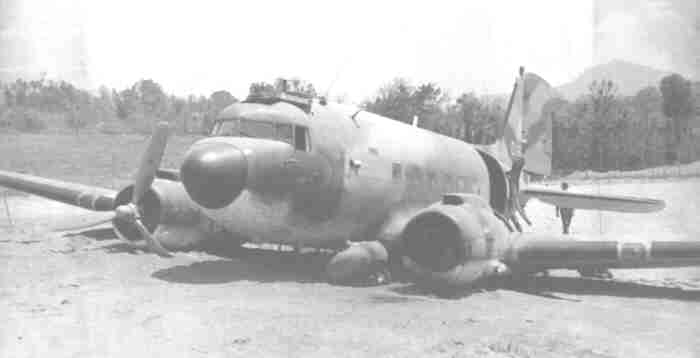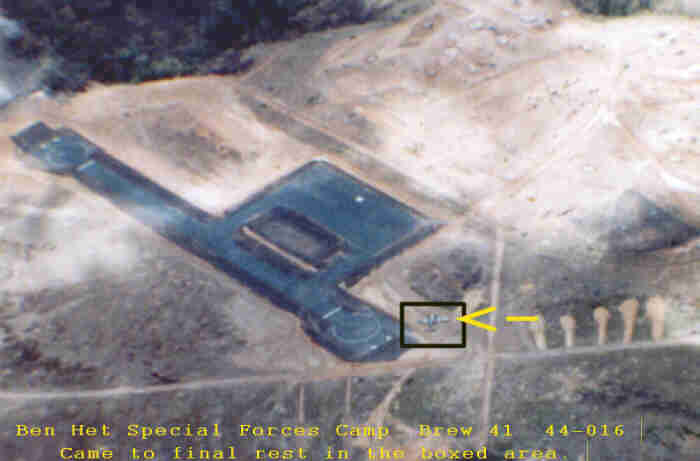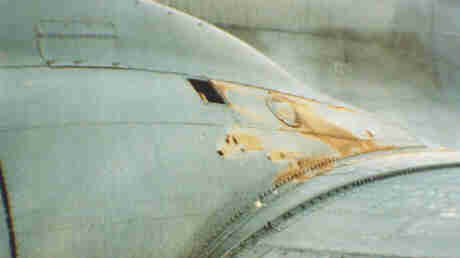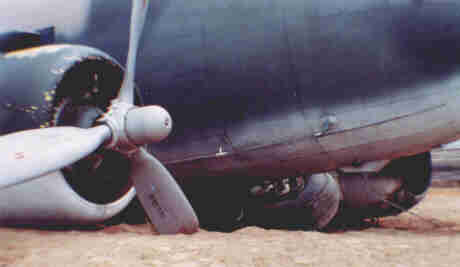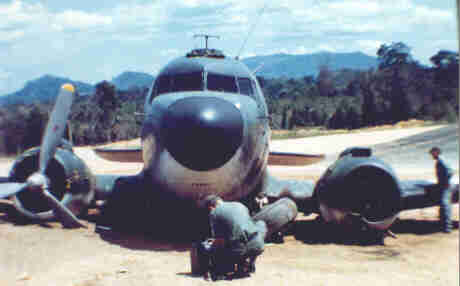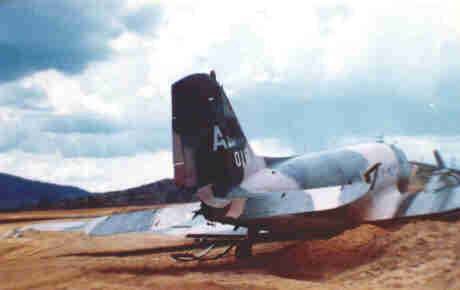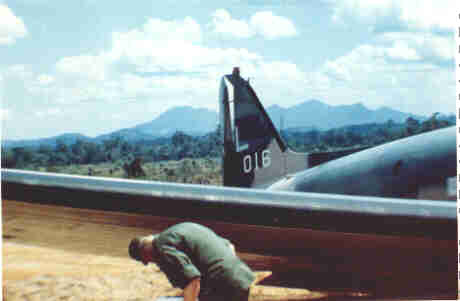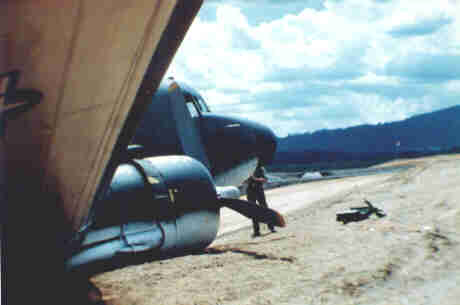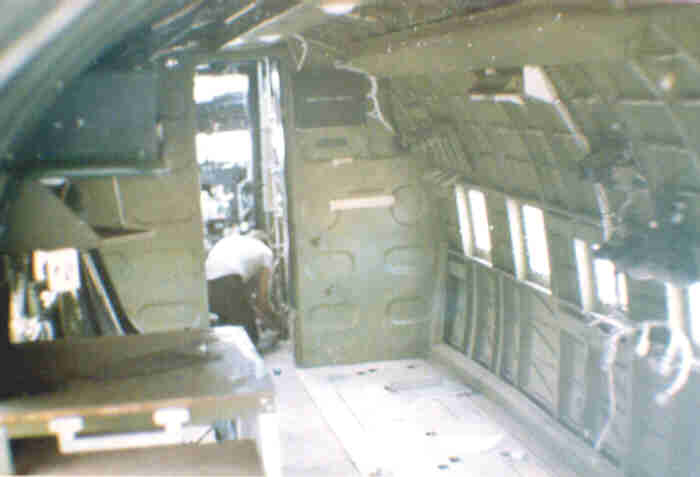EC-47 44-77016
Another EC-47 Lost, This data directly fromOfficial Declassified DocumentsA SPECIAL HISTORICAL STUDY OF USAFSS RESPONSE TO WORLD CRISES1949 - 1969United States Air Force Security Service
This is as told by a couple of the Radio Operators
When you see ( ), that portion was censored.
On 11 March, 1968, COMBAT COUGAR C-47 aircraft 44-77016 sustained severe combat damage from 37MM anti-aircraft fire while flying in ( ). The Pilot managed to control the aircraft, recovered, and flew it back into South Vietnam near Ben Het Special Forces Camp. All crew members were able to get out of the aircraft safely. Two of the Radio Operators who flew on the mission gave the following version of the incident: 11 March started out as another typical day with just one exception. The Radio Operators had a little trouble getting to their survival gear. Other than that, things went smoothly. This was the first time this crew had ever flown together, so after the intelligence briefing, everyone introduced themselves. Aircraft 016 was functioning normally and we were off the ground at 0545L. Since there isn't (sic) much happening that early in the morning and we had a two hour flight to our assigned area, 03, the entire crew was feeling somewhat relaxed. Our Flight Mechanic made coffee and passed it around to all those who wanted it. To help pass the time on the way to the area, the Aircraft Commander amused the entire crew by telling us some of his previous experiences. The entire crew, got some good laughs from these stories, but even greater than that, I think it gave us a little sense of security knowing that we had a vary capable and highly experienced AC. Besides listening to these stories, the RO's were doing their normal jobs as usual. Before reaching our assigned area, we had changed positions a couple of times. At the time of the hit, 0835L, the "X" operator notified the AC of the damage to the #1 engine (which he) observed from his vantage point. After perhaps a moment of indecision as to what to do next, the back end crew went to work and functioned as a well organized team. Our radios were set up on the emergency frequencies, and the destruction of all classified material was begun by the RO's. While we were doing this the FM was busy jettisoning of our equipment. As this was being done, the AC handled the may day procedures and the Navigator, remaining very calm, plotted our position and gave the AC the heading for out nearest friendly unit. Up front the Pilot and Co-Pilot had their hands full. The #1 engine took the hit, but the #2 engine was the one that gave them all the trouble. The #2 engine started to race and the AC directed the C-Pilot to allow the engine to run 2400 RPMs and then bring it back to 1800 RPMs. This was done approximately 18 to 20 times. By so doing,, they were able to keep the engine running for some time rather than feathering it. When it got so bad that they could no longer control it, they tried to feather it and found it impossible, thus causing them to cut the engine completely. This happened at approximately 0850L. With #2 engine frozen and because the landing gear had come down when we too the hit, we had a tremendous amount of drag and were losing 700 feet of altitude per minute. Because of this condition, the AC directed that all unnecessary equipment be jettisoned. Since the FM's took kit was sucked out when the rear door was jettisoned, we had no tools to work with. The receivers on the "X" and "Y" were jettisoned along with the MC88 from the "Y" position. The "X" operator literally tore the typewriter from the table to which it was secured. Since there were not tools, this was virtually all of the heavy equipment that could be jettisoned. All of the spare parachutes and harnesses were thrown out, along with the raft and Gibson Girl radio. We kept the M16's until the AC directed that they go. It is the general opinion of the backend crew that everything that was loose, or could be torn loose, was jettisoned from the aircraft. As soon as the may day was sent out by the AC, we were joined by an "O-2" * The "O-2" Pilot worked directly with our AC and advised him on what directions to take to get to Ben Het. This just confirmed what the Navigator had already passed to the AC. This again points out the efficiency an accuracy of the work that the Navigator had done. The "O-2" Pilot at one point recommended to the AC that he give the order for the entire crew to bail out. The AC had every right to give that order, but we feel that he did no do so because of the in- formation that he was continually getting from his Navigator, and his own experience. Because we were losing altitude, we could not go over the mountains that were in front of us. Instead, the "O-2" Pilot directed us around them and over the lowest possible terrain. At this point, we feel it is fitting to pay the higenst possible tribute to the rescue people and those who aided us when we reached Dak To. We are fairly certain that had we bailed out, the Jolly Greens ** would have been there to pick us up the minute we hit the ground. These people are certainly a welcome sight when someone is in trouble, and any recognition that they receive is well deserved. Minutes prior to our crash landing at Ben Het, the AC directed that everyone buckle in and prepare for the impact, and this was immediately accomplished. Upon impact, the aircraft bounced once and then turned in a large loop before coming to its final resting position. As far as the back crew goes, the Navigator got bounced around more than anyone else. Within 30 seconds after the aircraft came to an abrupt halt, the entire crew was off the bird an on the ground. As soon as we were a safe distance from the aircraft, the Special Forces and Montangard joined us and really could not do enough for us. When the AC determined that the aircraft was not going to burn, he, along with the two Radio Operators, went back aboard the aircraft to gather up all of the classified material that had been torn an scattered about. At this point, we feel it should be said that the AC was interested first in crew safety and then he wanted to make sure that all classified material was either destroyed or properly guarded. After guards were placed around the aircraft, the entire was flown to Dak To in the gun ships that had been with us from the beginning. Once at Dak To, a phone patch was put through to the 361st TEWS at Nha Trang. The AC informed them of the crash an said that all the crew was safe and all classified material had been destroyed. He also informed them that all the crew would be leaving for Pleiku as soon as possible. There was an O-2 leaving almost immediately and the AC told the FM, Navigator and Co-Pilot to leave with it. He instructed them to check with the flight surgeon as soon as they got to Pleiku. This again shows the interest he had in the safety of his crew. As soon as they had left for Pleiku, the AC and the ROs returned to the downed aircraft to make sure that all classified material had been removed and destroyed. A small amount of classified material was found on the aircraft. This was gathered by the RO's and burned. The burning of this material was witnessed by an Army Officer assigned to Dak To. After this had been done, we again returned to Dak To and awaited our transportation to Pleiku. From Pleiku, we were flown home by another 361st TEWS aircraft flying that area. As far as praise goes, there are not enough words to express the feelings of the RO's. The Pilot and Co-Pilot did a highly outstanding and professional job of bringing that aircraft back to Ben Het. Although this was the Co-Pilots first crash landing, he handled himself like a veteran. When the gear collapsed upon landing, they did an outstanding job of controlling. Also, enough cannot be said about the crew coordination. Without this, we feel that we would certainly have had to bail out. The entire effort was directed by the AC, and his directions were followed to the letter. He, at all times, kept the crew informed of what was happening. It is because of the coordination and highly professional manner in which everyone handled themselves that we are back here today. Also, we most assuredly had the Grace of God.
|
